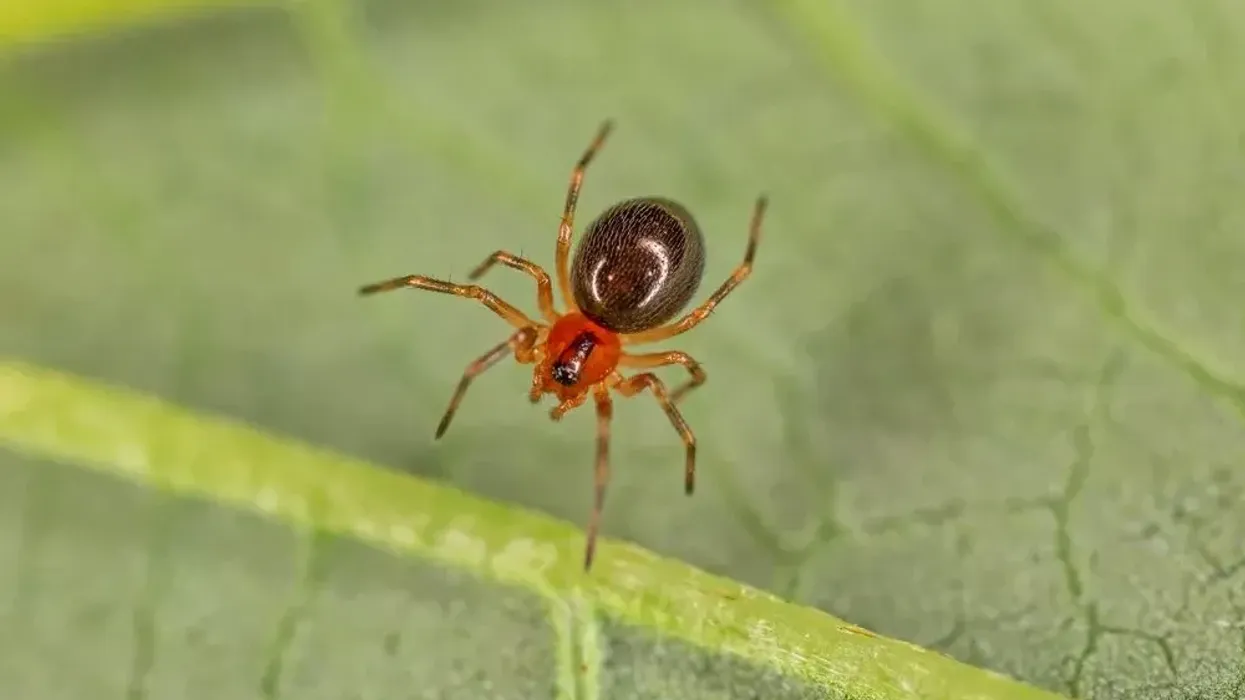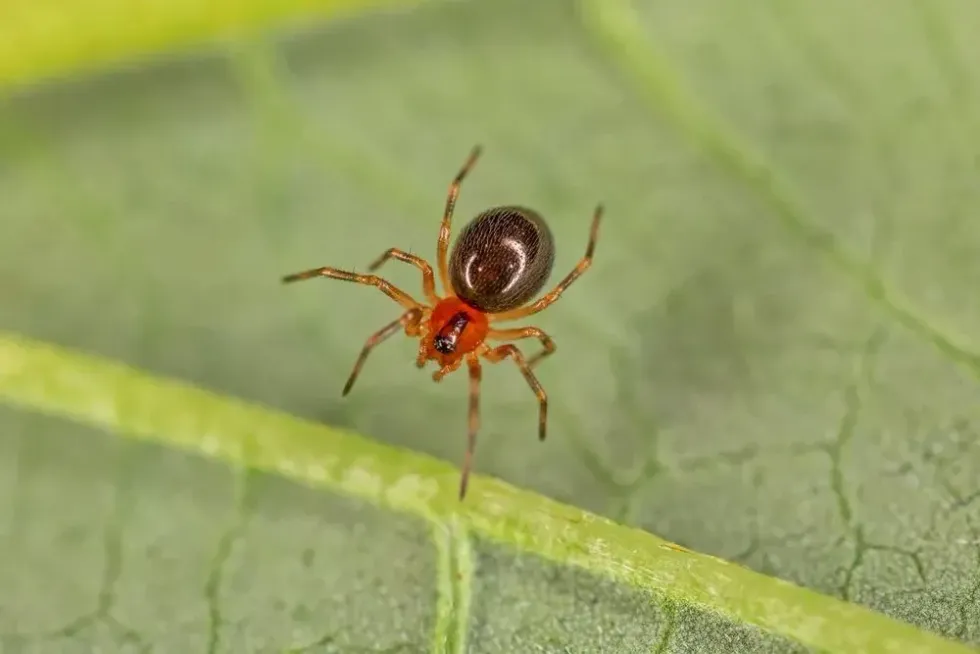People all over the world are fascinated by spiders, whether they think they are cool or terrifying. Money spiders are common species of spiders seen all over the world, so why not learn more about what is a money spider?
Money spiders are commonly known as sheet weavers or scientifically as Linyphiidae. These spiders are believed to bring good luck because their weaving abilities are so good. Stories say they can even spin you some new clothes and represent financial good fortune!
Learn more about these eight-legged creatures with this article and see if you can spot them in your area. You never know, they may bring you some good luck!
If you are curious about other spiders, have a look at our articles about the Indian ornamental tarantula or the green lynx spider.
Money Spider Interesting Facts
What type of animal is a money spider?
They are a species of spider that is believed to signify good luck.
What class of animal does a money spider belong to?
Money spiders are a type of arachnid. An arachnid is a class of invertebrate animals with joint legs. All spiders are within the arachnid class. The money spider is another commonly known name for the family Linyphiidae. Not much is known about this family of spiders, and new species are still being discovered around the world to this day.
How many money spiders are there in the world?
There are many different species of money spiders, 4695 species of money spiders so far, so it isn't easy to count all of these spiders because they are so numerous and tiny! In fact, the family Linyphiidae is the second largest family of spiders.
They are very common throughout Great Britain, usually found in the late summer and early fall.
Where does a money spider live?
Most species of money spiders can be found at ground level, but they occupy most habitats and are found throughout the world. For example, there are records of a money spider being found in Norway, crawling across the snow in temperatures of 44 F (7 C).
Money spiders can even be seen in your garden and are said to land on ships at sea in the early winter.
What is a money spider's habitat?
These tiny money spiders can be found almost anywhere in the world. Their natural habitat is low vegetation, fields, holes in the ground, the base of trees, shady places, long grass, and exposed roots. Mostly they are found close to ground level.
No matter where in the world you encounter a money spider, they will always live in a web called a sheet web. It is called this because it looks like a sheet with a raised dome in the center.
The spider positions itself upside-down under the sheet webs. These spiders are often discovered because of their sheet webs which are particularly visible in the morning, decorated with morning dew. You may even find hundreds of sheet webs if you go walking around the woods, fields, or meadow.
Larger species of money spiders may also create some vertical snares in their sheet webs to catch tiny insects and flies. Once a small insect or fly gets caught in the snare, they fall onto the sheet web, and the spider dashes to prey on their catch.
Who do money spiders live with?
Spiders are solitary creatures. Adults live alone in their nests, and they don't have to share any food caught in their web. Some research has found that many money spiders can be aggressive with other spiders as they get older, which drives them to live alone and avoid each other.
How long does a money spider live?
There is no data available about the lifespan of a money spider, but in general, the average spider life is up to one year. Female spiders also tend to live longer than males.
How do they reproduce?
Money spiders reproduce sexually. First, the male wanders to track down a female to mate with. Females can deposit a chemical called pheromones to attract a male mate. When the male has found a female mate, it releases a signal to show it is not prey but from the same species.
When it is mating time, males create a special small web called a sperm web. It is made from silk produced by the body of the male. The male drops sperm into the silk sperm web.
He then picks up this sperm web and deposits it into the female. When the female is ready to lay eggs in the future, she fertilizes her eggs with the sperm from the sperm web. Spiders can lay hundreds and even thousands of eggs in one go.
What is their conservation status?
There are so many different species of money spiders so it is difficult to record their conservation status. However, for the most part, they have a conservation status of Least Concern, meaning they are not expected to be extinct any time soon.
Money Spider Fun Facts
What do money spiders look like?
Money spiders are tiny eight-legged creatures. Most money spider species usually have a black body and long, slender brown legs. They usually have eight eyes and three tarsal claws. Some may even have some distinctive markings. Unfortunately, it is difficult to identify a money spider without looking through a microscope.
How cute are they?
Many people don't find creepy-crawlies cute, even if they are very small in size. Zooming into a money spider you will find monster-like rows of eyes, hairy skin, and claws. However, if you are a fan of spiders, they can certainly be cute!
How do they communicate?
Spiders communicate with each other by plucking their webs. Plucking a web string is a bit like strumming a guitar.
The vibrations signal to the spider who is approaching: another spider or prey. They may also vibrate their own bodies to communicate, something called seismic communication. They do this when courting a mate, warning rivals, or trying to catch prey.
How big is a money spider?
A money spider is pretty tiny! They reach up to only 0.07 in (2 mm) in length. A tarantula can reach up to 4.3 in (11 cm) in length, which is almost 55 times longer than the small size of a money spider!
How fast can money spiders move?
They can move quite fast, thanks to the wind. They often can travel up to 100 mi (160 km) in distance thanks to the cool night winds and air currents.
Cooler air then brings them down to land on the earth. They do this by 'ballooning', where they create a parachute from their webs and catch the wind. This way they can move a lot faster than by land on foot.
How much does a money spider weigh?
As money spiders are so small they weigh next to nothing.
What are their male and female names of the species?
Males and females are both called money spiders.
What would you call a baby money spider?
Baby spiders are called 'spiderlings' which are sometimes shortened to 'slings'.
What do they eat?
Money spiders eat insects. Money spiders also eat tiny invertebrates caught in their webs. They can prey on butterflies, moths like plume moths, aphids like the oleander aphid, the weevil, and planthoppers.
Are they poisonous?
Money spiders are pretty harmless to humans, but a money spider bite may cause redness and swelling.
Would they make a good pet?
They would definitely make a good pet for your garden. They can help with pest control and eat any annoying insects and flies roaming about.
If the spider is seen, they are said to bring good fortune to your home and family, a great reason to let them chill in webs in your garden and to think twice before killing them.
Did you know...
A common species of money spider spins webs that look like a hammock.
They are widespread in the United Kingdom and are the most common spider species in Britain.
The newest species of money spider was discovered very recently in Nepal in April 2021 and is called the Himalafurca.
Birds such as goldcrests prey on these spiders.
They can also be called sheet weavers because of the sheet-like webs they weave.
Romans had coins with spiders engraved on them to ward away poverty.
Why do they call it a money spider?
They are called money spiders because they are said to bring financial good luck if the spider is seen in your home or garden. In folklore, people believe that if a money spider lands on you, it will spin you a new set of clothes.
Whilst it's up to you whether you believe that these spiders truly bring good luck, getting new clothes is certainly a sign of financial good fortune!
Here at Kidadl, we have carefully created lots of interesting family-friendly animal facts for everyone to discover! Learn more about some other arachnids from our nursery web spider facts and huntsman spider facts pages.
You can even occupy yourself at home by coloring in one of our free printable Money spider coloring pages.










